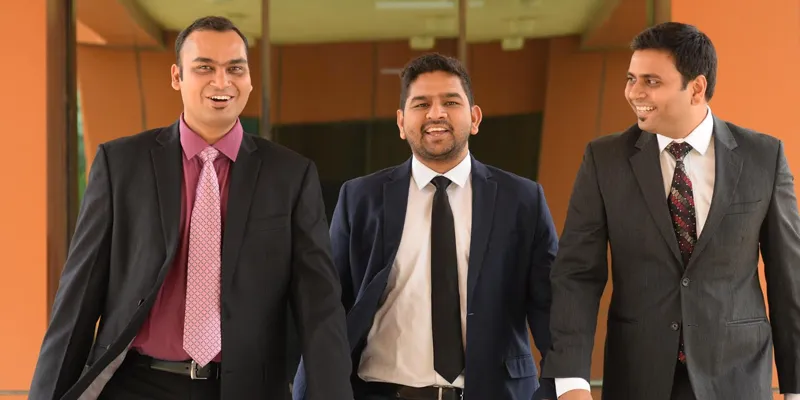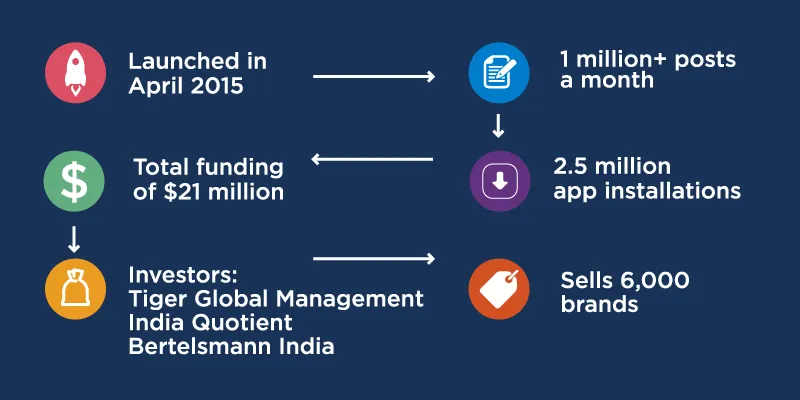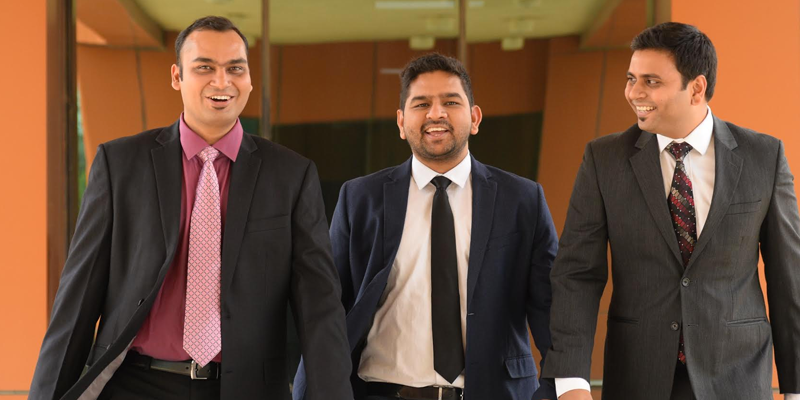From discovery platform to social network - the Roposo growth story
Think of it as a Pinterest for the fashion conscious – a place where fashionistas can follow each other, hold discussions, create curated lists of products that reflect their personal style, and pursue other activities relevant to their interest. This platform, aptly named Roposo (derived from the French word Apropos, which means relevant/suitable) was founded in 2014 by three IIT Delhi graduates, and is among India’s first fashion discovery platforms.

Having worked previously with startups, the three founders – Mayank Bhangadia, Avinash Saxena (ex-CTO of Zomato), and Kaushal Shubhank –had no trouble devising the technology needed for a platform they envisioned as a one-stop destination for fashion. Based on their earlier venture Giveter, a gifting platform, Roposo lets users create ‘stories’ about what they wear, through photos, videos, and style tips.
Within no time, Roposo evolved into a large network of fashion aficionados. “We started as a fashion product discovery platform. Today, we help our users figure their tastes and find their favourite products easily,” says Avinash.
Charm in variety
Roposo’s technology maps the users’ interests based on photos, places the user has checked in, items the user likes, and shows them what others with similar tastes are doing. Users can also see what is popular in different parts of the country with the help of geo-tagging.
Although there are other players in this space such as marketplaces Voonik, Limeroad, Craftsvilla, and Nykaa, and fashion discovery platforms Wooplr, Avinash says that it is social networks like Facebook that they really consider competition. He explains, “Roposo is a platform for two million users to share stories on not just fashion, but topics such as travel, food, fitness, and lifestyle. Our job is to make them relevant for people who are interested in those particular areas.”
Boosting business
In the initial days after their launch in July 2014, revenue was negligible with users spending only two-three hours a month on their website. Once they launched the app in April 2015, traction increased significantly. One in five sessions led the customer to purchase links, and customers would make a purchase on an average of once every 18 visits.
Online marketplaces too are warming up to fashion discovery. Today, more than 2,000 offline stores are present on Roposo. Roposo’s clients include Jabong, Yepme, L’Oreal, Snapdeal, and Flipkart. Ekank Goyal, assistant manager (Affiliate Marketing) at Jabong, says that since they tied up with Roposo eight months ago, they have seen a 50 percent increase in user engagement on a monthly basis, owing to increased visibility from people posting about Jabong on Roposo. When Roposo users list products bought from Jabong, their followers also tend to visit the Jabong website.
Roposo has also tied up with Tinder, Wedmegood, and UrbanClap. These brands are reaching out to Roposo users by creating short-form video content that works best for them and the Roposo community.
“The content created has been distributed to their other social media platforms as well. We are, in fact, in talks with Tinder to do a broader collaboration as a result of our initial one,” said Avinash.
Most of Roposo’s content is visual. “Many users post do-it-yourself [DIY] videos from YouTube. We are now providing a 15-second video feature, taking into account poor internet bandwidth,” said Avinash. In April, Roposo launched the feature with full-screen native video capture on its app at the Lakme Fashion Week.
Roposo also offers access to stylists and fashion bloggers including Sonam Kapoor’s personal stylist Karuna Laungani and Femina Miss India official stylist Surabhi Sharma. Roposo has also tied up with luxury brands like Michael Kors, Pernia’s Popup Shop, Ritu Kumar, and Masaba Gupta, for selling on its platform.

Creating communities
Roposo’s communities take fashion very seriously. “These are communities with small boutique owners, makeup artists, stylists, and some celebrities, who conduct events,” says Avinash.
Most of Roposo’s users are aged16-35, with 60 percent of them from metro cities. Roposo claims that their stories are growing 4x every month. They are now introducing content in local languages too. “Many users are posting videos in Punjabi, Bengali, Assamese as they find it easier to express themselves in their native tongue.”
Sanjana Tewari, a 19-year-old undergraduate student at the Delhi College of Arts and Commerce, joined Roposo in January 2016. Today, she has more than 50 stories and 9,000 followers. The geo-tagging feature is her favourite, which she says other platforms lack. “I go for all their events in Delhi. All my friends are also on Roposo,” she says.
Up next
Roposo generates revenue through both advertisements and lead generation. “We suggest interesting places near the user’s location. Brands can interact with users too,” says Kaushal.
And although he feels that Roposo still has more avenues of monetisation to explore, Roposo is already operationally profitable, with zero expenses in marketing or logistics, and a majority investment in technology and products.
Roposo is targeting eight million users this fiscal. Since more smartphone users are men, Roposo launched a men’s section recently. Kaushal adds: “Building product and technology is our concern, not profit.
We want to build a community by reaching out to the customers and engaging them.” But there are hurdles to pass. Kaushal says: “Running Roposo takes 60-70 servers, and we will soon need 200. We have cloud-based infrastructure, which demands cheaper and faster platforms.”
The founders say that their team is their biggest asset. In the journey forward, they are hoping to acquire teams that build consumer-facing products, probably in artificial intelligence and machine learning. The Gurgaon-based startup, which started with 20 employees, now has 141 employees, 16 of whom are in Mumbai. Recently, they hired Abhay Antony from Facebook as Project Manager, and ex-Google employee Mona Goyal has joined as HR head. Another ex-Google employee Ashish Aggarwal, an MBA holder from XLRI and an entrepreneur himself, also came to Roposo a few months ago.
The Indian e-commerce market is estimated to be worth $119 billion by 2020, according to a recent report by Morgan Stanley, which also says that there are three new internet users in India every second. Platforms like Roposo have the advantage of going beyond e-commerce – and will continue to expand with increasing internet penetration, which the Morgan Stanley report says will increase to 59 percent in 2020 from 32 percent in 2015. According to Ekank, people are more inclined to take fashion recommendations. “Fashion discovery platforms complement our business. We have seen a 100 percent increase in the number of orders from Roposo since we started,” he adds.
Thanks to the smartphone revolution, India will have 320 million online shoppers by 2020, a major jump from 50 million in 2015. Roposo’s marketing is done via their communities. It looks like they have only scratched the surface of a market with huge potential.











